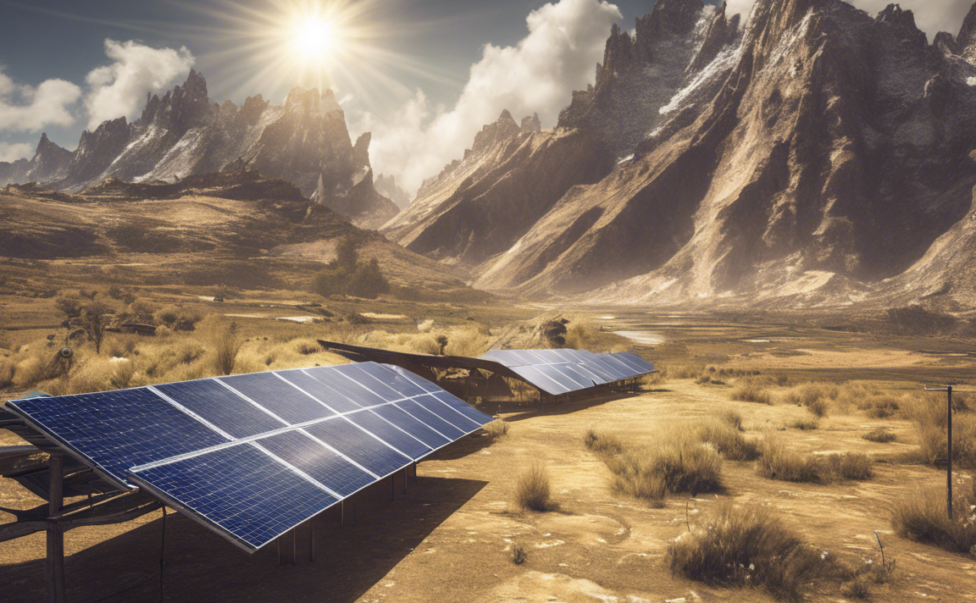Harness the Power of Solar Tweaks: Brightening Your Home and Budget
Solar energy is an abundant and renewable source of power that can significantly reduce your electricity bills while also helping the environment. The technology behind solar panels has advanced rapidly in recent years, making it more affordable and efficient for homeowners to go solar. In this article, we will explore some tweaks you can implement to maximize the benefits of solar power in your home, both in terms of brightening your living space and your budget.
Understanding Solar Power
Before delving into the tweaks that can enhance the performance of your solar PV system, it’s essential to have a basic understanding of how solar power works. Solar panels are made up of photovoltaic cells that convert sunlight into electricity through the photovoltaic effect. When sunlight hits the panels, it dislodges electrons from their atoms, creating an electric current. This current is then converted from direct current (DC) to alternating current (AC) by an inverter for use in your home.
Solar Panel Orientation and Tilt
One of the key factors that can impact the efficiency of your solar panels is their orientation and tilt. For homeowners in the Northern Hemisphere, panels should ideally face south to capture the most sunlight throughout the day. However, if south-facing installation is not feasible, panels can be oriented east or west with a slight decrease in efficiency.
Additionally, the tilt of your panels can also affect their performance. The optimal tilt angle for solar panels is typically equal to your latitude, but adjusting the tilt to be more perpendicular to the sun’s angle during peak hours can increase energy production. You may need to consult with a professional to determine the best orientation and tilt for your specific location and roof configuration.
Solar Panel Cleaning and Maintenance
Regular maintenance of your solar panels is crucial to ensure they are operating at peak efficiency. Dust, dirt, bird droppings, and other debris can accumulate on the panels and block sunlight, reducing their power production. Cleaning your panels periodically with a soft brush or sponge and mild detergent can help maintain their performance.
In addition to cleaning, it’s essential to inspect your panels for any damage or defects regularly. Cracked panels, loose connections, or shading from nearby trees or structures can all decrease the output of your system. Addressing these issues promptly can prevent further damage and ensure optimal performance.
Energy Storage with Batteries
While grid-tied solar systems are the most common choice for homeowners, incorporating energy storage through batteries can further optimize your solar power setup. Batteries allow you to store excess energy generated during the day for use at night or during power outages, increasing your energy independence and reducing your reliance on the grid.
There are different types of batteries available for solar storage, including lead-acid, lithium-ion, and saltwater batteries, each with its own set of advantages and disadvantages. When considering battery storage for your home, factors such as capacity, cycle life, depth of discharge, and efficiency should be taken into account to choose the right solution for your needs.
Smart Home Integration
Integrating your solar power system with smart home technology can enhance control and monitoring capabilities while maximizing energy savings. Smart inverters, energy management systems, and smart thermostats can all work together to optimize energy consumption, storage, and production in your home.
By connecting your solar panels to a smart home platform, you can track your energy production in real-time, remotely monitor your system’s performance, and receive alerts in the event of any issues. This level of automation and insight allows you to make data-driven decisions to further enhance the efficiency and savings of your solar setup.
Frequently Asked Questions (FAQs)
1. What size solar system do I need for my home?
The size of the solar system you need depends on your energy consumption, location, roof size, and budget. A professional solar installer can help assess your needs and recommend the right size system for your home.
2. How much money can I save with solar power?
The amount of money you can save with solar power varies depending on factors like electricity rates, system size, incentives, and usage patterns. On average, homeowners can save thousands of dollars over the lifespan of their solar panels.
3. Are there government incentives available for installing solar panels?
Yes, many governments offer incentives such as tax credits, rebates, and net metering programs to encourage the adoption of solar power. Check with your local authorities to see what incentives are available in your area.
4. What is net metering, and how does it work?
Net metering is a billing arrangement where homeowners with solar power can receive credit for excess electricity they generate and send back to the grid. This credit can offset the electricity they consume from the grid when their panels are not producing enough power.
5. Do solar panels work in cloudy or rainy conditions?
Solar panels can still generate electricity in cloudy or rainy conditions, although their efficiency is reduced compared to sunny days. Advances in solar technology have improved the performance of panels in low-light conditions, making them a viable option in varied weather conditions.
In conclusion, implementing these solar tweaks can help you maximize the benefits of solar power in your home, from increasing energy production and efficiency to saving money on your electricity bills. By optimizing your solar setup through orientation, maintenance, storage, smart home integration, and professional guidance, you can enjoy a brighter, more sustainable future while reducing your environmental impact.

